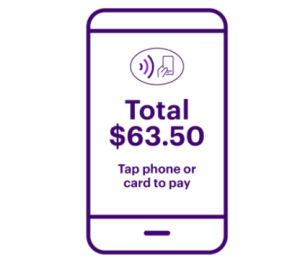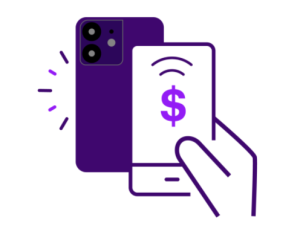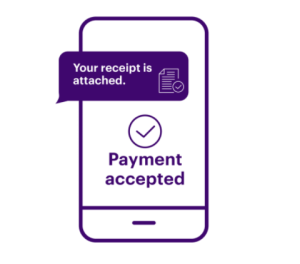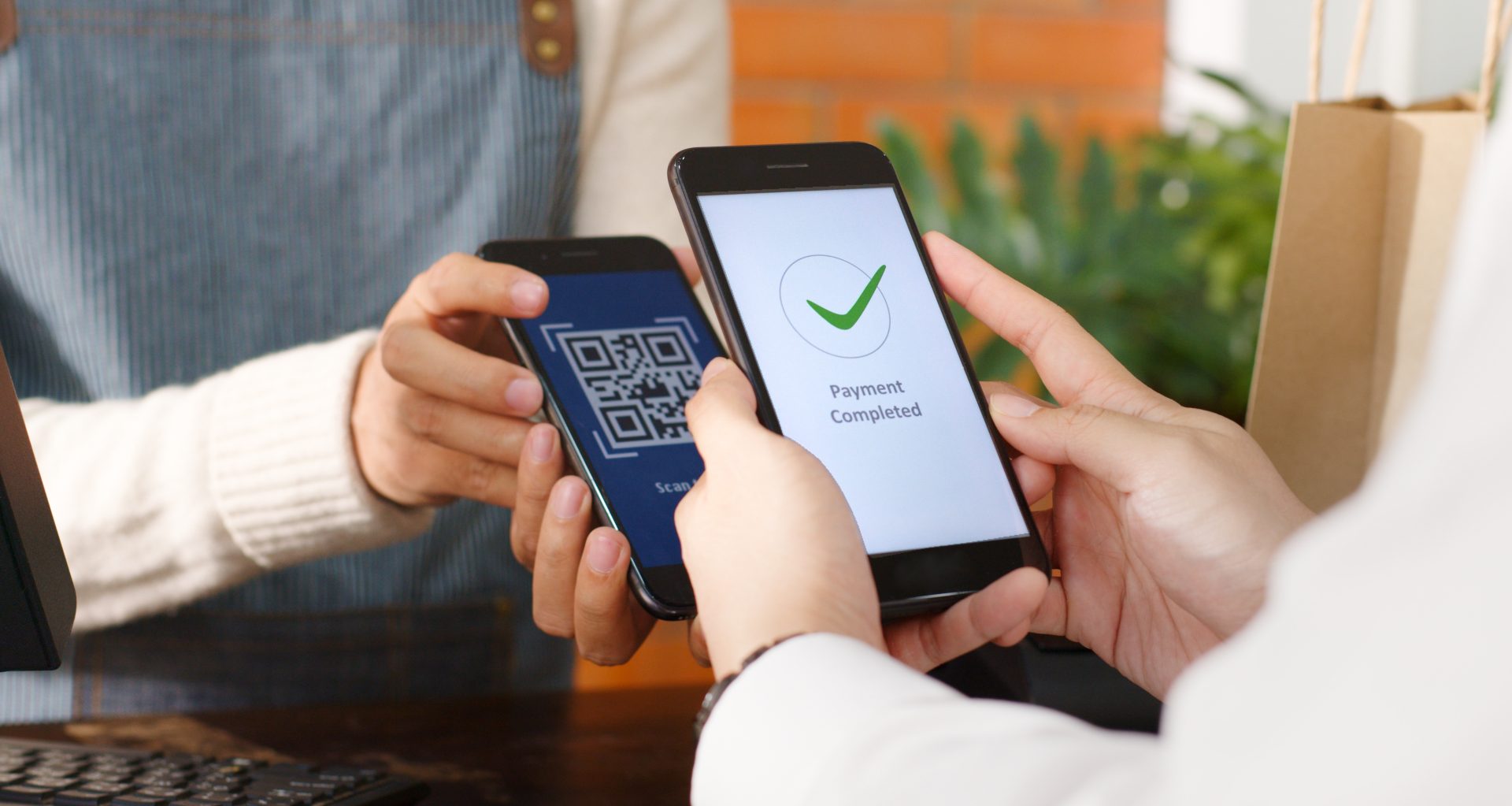There’s a buzz in the payments industry following Apple’s announcement that it will enable “tap on phone” on its devices. Let’s take a closer look at this opportunity and why everyone is talking about it.
What is it?
Tap on phone instantly turns a merchant’s smartphone or tablet into a contactless point-of-sale (POS) terminal that can receive payments from customers’ contactless cards or mobile wallets, provided that both the paying and receiving devices are enabled for near-field communication (NFC). It transforms the merchant into an omni-channel business without requiring any additional hardware.
How does it work?
The beauty of tap on phone is its speed and simplicity for both merchants and customers.
- The business enters the purchase amount into the tap on phone app.

2. The customer then taps their contactless card or device against the business’s mobile device.

3. The purchase is done! The business can send a digital receipt to the customer or print one using an external printer.

Tap on phone transactions are protected by the same security and encryption technology offered with EMV chip cards throughout the world. They use the same secure transaction process as traditional POS transactions.
Who is getting behind it?
Tap on phone functionality is currently available on Android phones and tablets and can be embedded in Android third-party apps.
Apple recently announced that it will roll the technology out to iPhones this spring. It will not create a closed ecosystem like Apple Pay, instead following Android’s enablement strategy. Apple announced Stripe as its US launch partner, adding that Stripe will also enable Shopify’s POS app with the functionality, and additional payment platforms and apps will follow later this year.
In January, JPMorgan acquired 49% of Viva Wallet, which enables tap on phone for Android in Europe. Viva Wallet provides hardware functionality, an app and processing capabilities. This puts JPMorgan in a strong position to lead the pack in supporting this functionality as Apple rolls it out.
We expect Stripe to push tap on phone strongly across its platform and software customer base (such as Shopify POS) as well as its primarily e-commerce merchant base. Stripe merchants will be able to accept payments from NFC cards and devices with no additional hardware. This roll-out will influence the pace of adoption in the US market, which will depend largely on consumer and business awareness.
Why is it taking off now?
We believe tap on phone is a continuation of a larger trend popularized by Square and other fintechs: driving down the barriers to entry in payment acceptance for businesses. This is accomplished through simpler, cheaper smart devices and low-friction sign-up and onboarding for the majority of businesses.
Contactless payments have been adopted more slowly in the US than in Europe, Canada and other markets, despite 67% of US businesses offering contactless acceptance solutions as of 2021, according to the NRF and Forrester.
COVID-19 provided a much-needed push for contactless payments. Visa reports that nearly 70% of card members who are new to contactless payments say they will continue to use them after the pandemic.
As American consumers experience the speed and convenience of contactless payments, we expect they will prefer businesses that offer this option. This in turn will drive increased adoption of the technology by businesses looking to retain and attract customers.
We have observed this trend in other markets, where use cases clearly show increased convenience for consumers. For example, the London Underground enabled contactless payment across transit methods in 2014, and by 2019, 55% of payments had shifted to contactless. We expect that Apple’s roll-out of tap to pay in US Apple Store locations later this year will similarly accelerate consumer and business awareness and adoption.

Learn how Accenture supports Women in Payments, a growing network that unites women in payments from around the globe.
LEARN MOREWhere will it have an impact?
We see several key areas where tap on phone could have a significant impact:
Cashless societies: Tap on phone will support countries that are moving to a cashless society. For example, Danish regulators will require certain types of businesses to start using digital cash registers (e.g., POS systems) to manage their businesses by 2024 (Aaen & Co).
Emerging markets: Micro-merchants represent around 40% of the GDP in emerging markets, but 90% of them don’t take digital payments of any kind (Pymnts.com). If tap on phone becomes available locally, it could be the most practical way to enable these businesses to accept digital payments.
Card-not-present businesses: Tap on phone should see high uptake in businesses that operate primarily remotely (e.g., through e-commerce) but need to accept in-person payments on occasion.
Back-up: Tap on phone will provide a reliable back-up POS system for businesses if their primary acceptance system fails or they can’t bring it to a remote selling location.
What might hold it back?
To become a widely accepted payment method, tap on phone must overcome several barriers. We believe these are some of the most significant ones:
- Consumer and business awareness needs to expand and both parties have to adopt the technology.
- Businesses still need a payment-processing contract and processing software, for which there is an established, competitive marketplace.
- Businesses likely won’t switch payments providers solely to enable tap on phone, so they may wait until their existing provider offers it.
- The cost of card acceptance for businesses remains and can be material and prohibitive.
- Adoption of contactless payments in major markets (such as the US) must become more widespread.
- Consumer trust issues will need to be overcome because consumers are used to dedicated payment acceptance devices and may be reluctant to accept tap on phone as safe.
- For transactions that require a PIN, the customer will need to trust the system enough to enter a PIN in the merchant’s personal phone or tablet. Ideally there would be a private way to do so, and some way of addressing hygiene concerns related to physically touching someone else’s smartphone or tablet to enter a PIN.
These types of barriers are common with new technology. The fact that tap on phone reduces friction for both businesses and consumers is a strong incentive to overcome the barriers to widespread use. We will be keeping a close eye on how things unfold this year, which is likely to provide early indications of whether the technology is truly going to become the next big thing in payments.
Contact me to learn more about the payments technologies that are getting us excited about the future.
If you would like to learn more about growth opportunities in payments read our report ‘Growing payments to new heights: The value propositions that pay’.
Register to view full report










